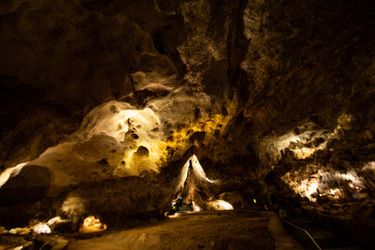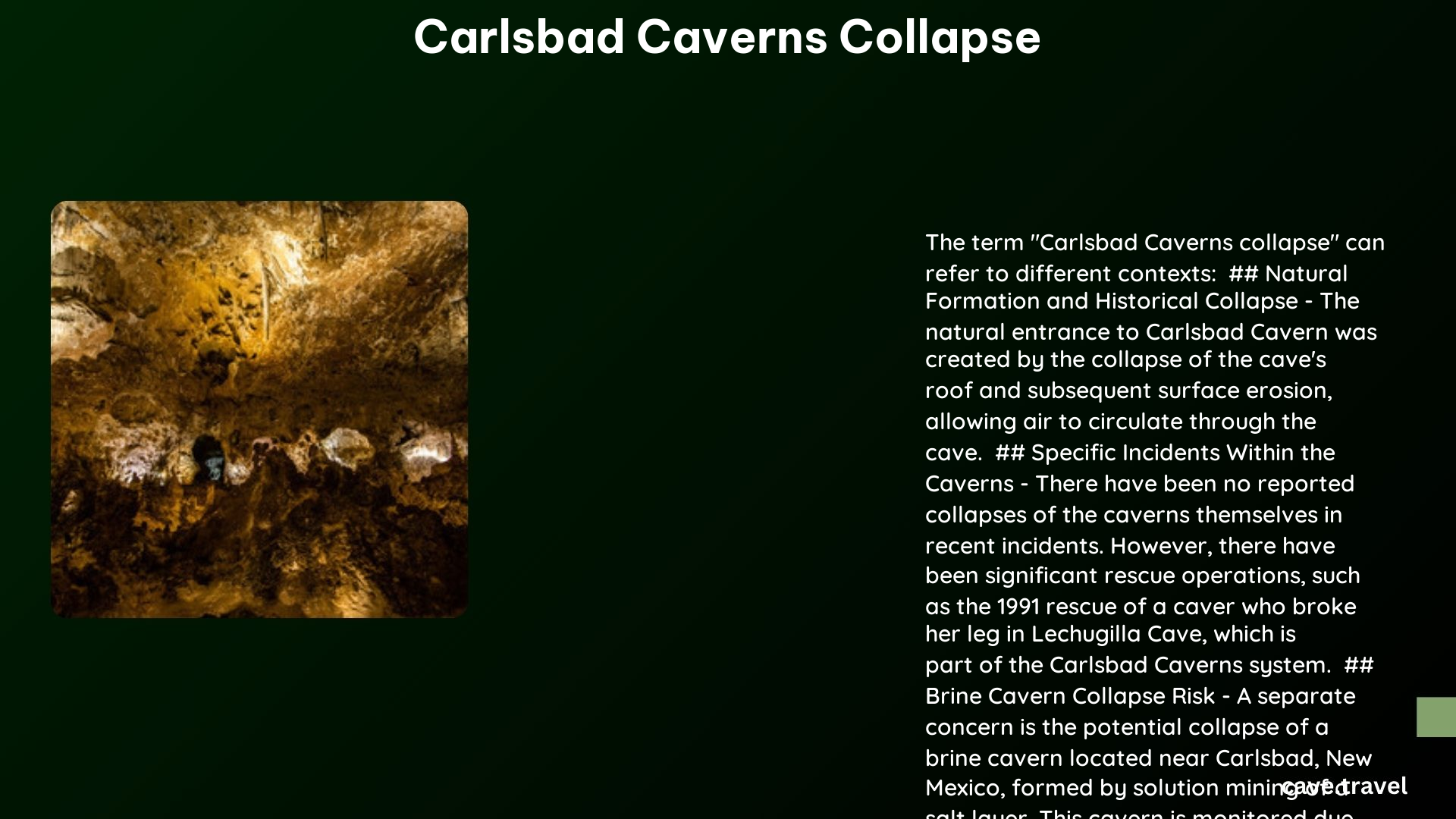Carlsbad Caverns, a UNESCO World Heritage site, faces potential collapse due to its unique geological formation and human impacts. The caverns, carved from limestone through millennia of erosion, are susceptible to structural instability. This article explores the causes, historical incidents, and prevention measures related to Carlsbad Caverns collapse, highlighting the delicate balance between preserving this natural wonder and managing its inherent risks.
What Are the Primary Causes of Carlsbad Caverns Collapse?

The potential for collapse at Carlsbad Caverns stems from a combination of geological factors and human activities:
Geological Factors:
- Karst Topography
- Limestone Dissolution
- Absence of Significant Soil Zone
- Surface Erosion
Human Impact:
- Vandalism
- Contamination
- Excessive Visitation
The karst landscape, characterized by its soluble rock formations, is particularly vulnerable to erosion and collapse. The limestone that forms the caverns is constantly being dissolved by acidic water, creating a dynamic and potentially unstable environment.
How Has Human Activity Contributed to the Risk of Collapse?

Human activity has significantly increased the risk of collapse at Carlsbad Caverns:
-
Vandalism and Theft: Historically, up to 2,000 speleothems (cave formations) were vandalized or stolen annually, weakening the cave structure.
-
Contamination: Approximately 5.3 million liters of contaminated water enter the groundwater system yearly due to:
- Parking lot runoff
- Accidental spills
-
Maintenance yard incidents
-
Excessive Visitation: The sheer number of visitors can impact the cave’s delicate ecosystem and structural integrity.
| Human Activity | Impact on Caverns |
|---|---|
| Vandalism | Weakens structure |
| Contamination | Degrades features |
| Visitation | Ecosystem stress |
What Historical Incidents Highlight the Collapse Risk?
Several incidents have underscored the potential for collapse within Carlsbad Caverns:
-
Natural Entrance Formation: The current natural entrance was created by a historical collapse at the cave’s top, demonstrating the ongoing geological processes.
-
Rescue Incidents: In 1991, a caver was injured when a rock handhold gave way in Lechuguilla Cave, part of the Carlsbad Caverns system, necessitating a complex rescue operation.
-
Ongoing Rockfalls: While major collapses are rare, small-scale rockfalls occur regularly, posing risks to both visitors and cave features.
These incidents highlight the dynamic nature of the cave system and the constant need for vigilance and safety measures.
What Measures Are in Place to Prevent Collapse?
To mitigate the risk of collapse and protect the caverns, several preventive measures have been implemented:
-
Strict Regulations: The National Park Service enforces stringent rules for visitors and cavers to minimize human impact.
-
Monitoring Systems:
- Regular water quality checks
- Inspection of potential collapse zones
-
Tracking of geological changes
-
Maintenance Activities:
- Stabilization of vulnerable rock formations
-
Management of surface runoff to prevent contamination
-
Geological Assessments: Comprehensive surveys and structural integrity evaluations are conducted periodically.
How Are Structural Assessments Conducted?
Structural assessment protocols at Carlsbad Caverns involve:
- Detailed Geological Surveys:
- Mapping of cave passages
- Analysis of dissolution features
-
Study of cave deposit stratigraphy
-
Water Quality Monitoring:
- Regular testing of groundwater
- Identification of contaminants
-
Assessment of ecosystem impact
-
Geomorphological Analysis:
- Evaluation of passage forms
- Study of karren (surface and underground erosional features)
- Analysis of overall cave system structure
These assessments are ongoing and integral to the park’s management plan, though specific costs and timelines are not publicly detailed.
What Are the Long-term Implications of Potential Collapse?
The long-term implications of a potential collapse at Carlsbad Caverns are significant:
-
Ecological Impact: A major collapse could disrupt the unique cave ecosystem, potentially leading to the loss of rare species.
-
Tourism and Economy: As a major tourist attraction, any closure or restriction due to collapse would have substantial economic impacts on the region.
-
Scientific Value: The caverns are a valuable site for geological and biological research. A collapse could limit or end access to important study areas.
-
Cultural Heritage: As a UNESCO World Heritage site, any significant damage to Carlsbad Caverns would be a loss to global cultural heritage.
Conclusion
The potential for collapse at Carlsbad Caverns is a complex issue rooted in both natural geological processes and human impacts. While the risk cannot be eliminated entirely, ongoing monitoring, strict regulations, and preventive measures help maintain the delicate balance between preserving this natural wonder and ensuring public safety. The continued study and careful management of Carlsbad Caverns are essential for its long-term preservation and for maintaining its status as one of the world’s most remarkable cave systems.
References:
- https://npshistory.com/publications/cave/nrr-2007-003.pdf
- https://geoinfo.nmt.edu/publications/monographs/bulletins/downloads/117/Bulletin117.pdf
- https://www.nps.gov/cave/learn/nature/geologicformations.htm
